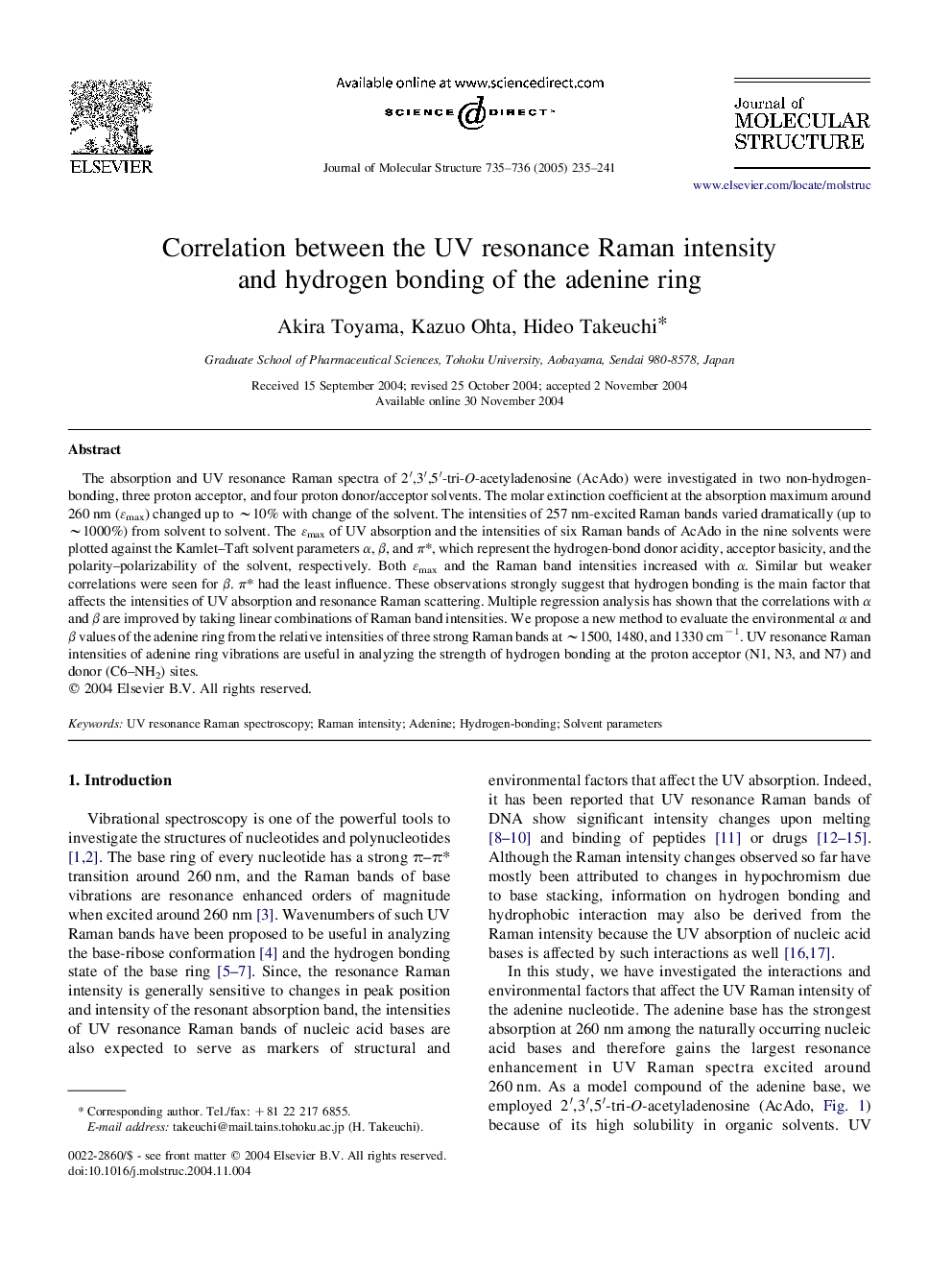| Article ID | Journal | Published Year | Pages | File Type |
|---|---|---|---|---|
| 9770401 | Journal of Molecular Structure | 2005 | 7 Pages |
Abstract
The absorption and UV resonance Raman spectra of 2â²,3â²,5â²-tri-O-acetyladenosine (AcAdo) were investigated in two non-hydrogen-bonding, three proton acceptor, and four proton donor/acceptor solvents. The molar extinction coefficient at the absorption maximum around 260 nm (εmax) changed up to â¼10% with change of the solvent. The intensities of 257 nm-excited Raman bands varied dramatically (up to â¼1000%) from solvent to solvent. The εmax of UV absorption and the intensities of six Raman bands of AcAdo in the nine solvents were plotted against the Kamlet-Taft solvent parameters α, β, and Ï*, which represent the hydrogen-bond donor acidity, acceptor basicity, and the polarity-polarizability of the solvent, respectively. Both εmax and the Raman band intensities increased with α. Similar but weaker correlations were seen for β. Ï* had the least influence. These observations strongly suggest that hydrogen bonding is the main factor that affects the intensities of UV absorption and resonance Raman scattering. Multiple regression analysis has shown that the correlations with α and β are improved by taking linear combinations of Raman band intensities. We propose a new method to evaluate the environmental α and β values of the adenine ring from the relative intensities of three strong Raman bands at â¼1500, 1480, and 1330 cmâ1. UV resonance Raman intensities of adenine ring vibrations are useful in analyzing the strength of hydrogen bonding at the proton acceptor (N1, N3, and N7) and donor (C6-NH2) sites.
Related Topics
Physical Sciences and Engineering
Chemistry
Organic Chemistry
Authors
Akira Toyama, Kazuo Ohta, Hideo Takeuchi,
